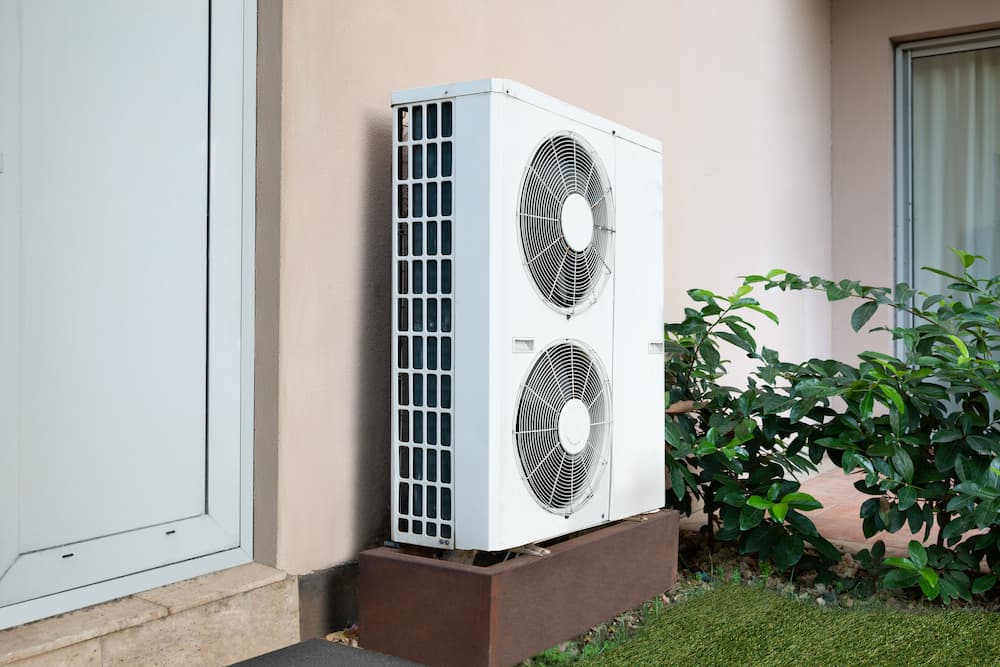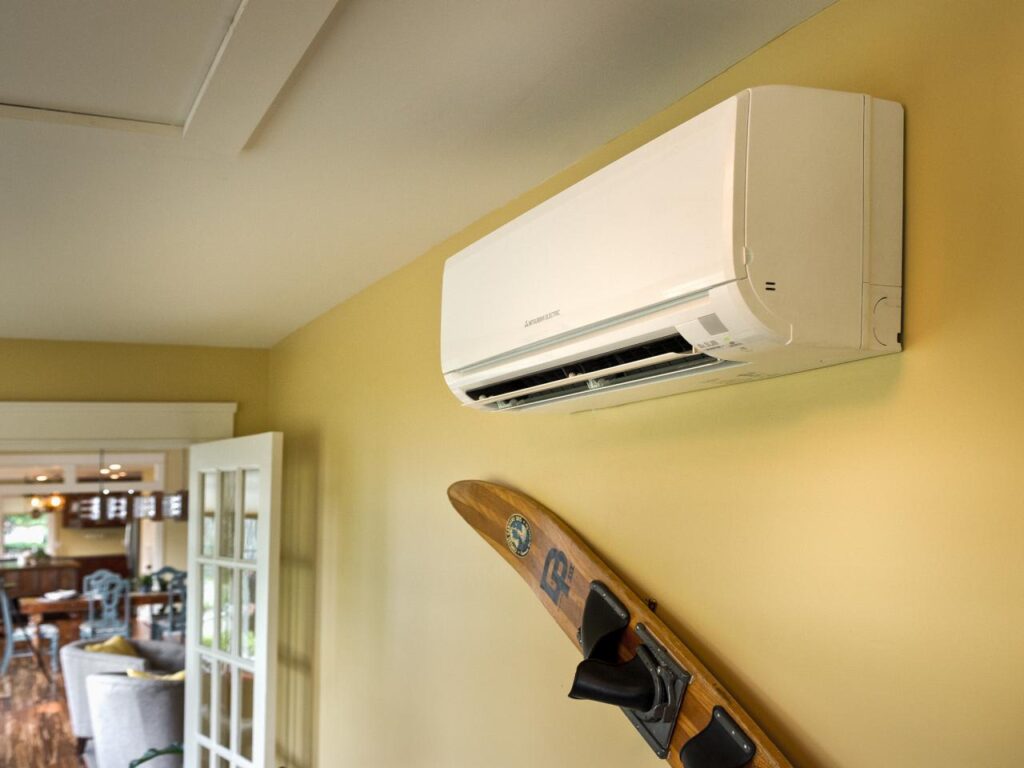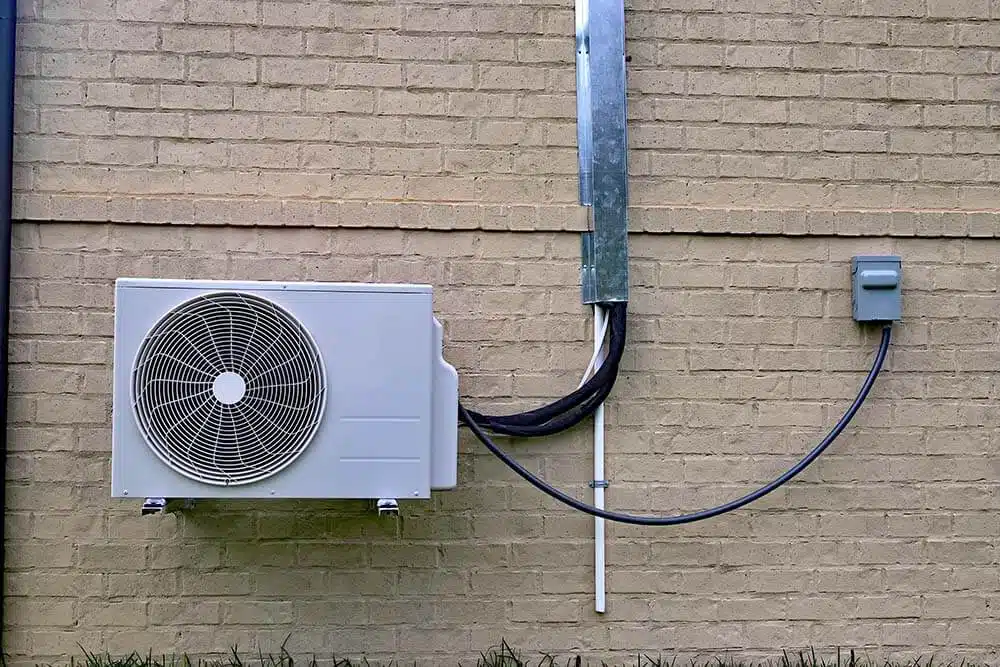
Ductless mini-splits, commonly referred to as ‘mini-split air conditioners’ or ‘ductless AC units’, are popular and becoming increasingly common in many households due to their efficiency, convenience, and ability to provide year-round comfort.
Although somewhat small in size compared to traditional cooling systems, these versatile machines come equipped with multiple features that can be utilized for cooling during the spring and summer months, as well as heating solutions during fall and winter.
Despite their clear advantages, however, there are still several considerations you should make before opting for one of your own. In this article, we will review the pros and cons of ductless mini splits so that you can compare them side by side against other options available on the market today.
Overview of ductless mini-split systems and how they work

Ductless mini-split systems are composed of two main components: an outdoor condenser and one or more indoor air handlers. The outdoor component is typically placed on the exterior wall of your home near the area to be cooled, while the indoor component(s) can be mounted directly onto the wall in different rooms or areas.
All components are connected through refrigerant lines, which allow the exchange of cooled or heated air between the two.
The main benefit of a ductless mini-split system is its flexibility in terms of installation and configuration. Since only a small hole needs to be cut into the wall for installation, no extensive construction or remodeling is required like with other cooling systems.
Pros of installing a ductless mini-split system

Installing a ductless mini-split system can be beneficial in a number of ways. The most notable benefits include:
- Energy efficiency and cost savings: Ductless systems are designed to be much more energy efficient than traditional air conditioners, leading to significant savings on electricity bills over time. Additionally, since they require little maintenance (no ductwork to clean or repair), they can be cheaper to install and maintain than other cooling systems.
- Customizable comfort: With multiple air handlers installed throughout the house, you have full control over the temperature in different rooms and areas. This also gives you more flexibility in terms of how much energy you use for cooling or heating, as you can adjust the temperature settings in different rooms individually.
- Quiet operation: Ductless systems are known for their quiet operation, which is a great benefit for those who live in busy or noisy households.
Cons of installing a ductless mini-split system

Unfortunately, there are a few drawbacks to installing a ductless mini-split system. The most notable disadvantages include:
- High installation costs: Despite their lower maintenance costs, the initial setup of a ductless system can be quite expensive. This is due to the fact that multiple indoor air handlers need to be installed throughout the house, which requires professional labor and specialized tools. Additionally, if you live in an older home, you may need to upgrade your electrical panel to accommodate the system’s electrical needs.
- Inability to cool large areas: Ductless systems are designed for localized cooling or heating, so they cannot effectively cool or heat larger areas like traditional systems can. This means that they may not be the best choice if you need to cool multiple rooms at once.
- Difficulties integrating with other systems: Integrating a mini-split system with other home automation components can be difficult at times and may require additional installation work.
Tips for installing a ductless mini-split system correctly
When it comes to installing a ductless mini-split system, it is important to make sure that you select the right size for your home.
The size of the system will determine how much cooling or heating power it can provide and how energy efficient it will be. To ensure optimal performance, you should consult with an experienced HVAC technician to evaluate the cooling or heating requirements of your home and find a system that can meet those needs.
Another important tip is to make sure that the indoor air handlers are installed in the right locations. Placing them too close to windows or other sources of heat can result in inefficient operation, as they will have to work harder to cool or heat the area.
Finally, before installing a ductless mini-split system, you should ask your contractor if there are any special permits or codes that need to be followed in order for it to comply with local regulations. It is also important to make sure that all of the components are installed correctly and securely, as this will help ensure that the system runs efficiently and safely.
Conclusion
Installing a ductless mini-split system can be a great way to save money on energy costs and enjoy customized comfort in your home. Although the initial installation costs may be high, this type of cooling or heating system can provide significant long-term savings through its energy efficiency and low maintenance costs.
By following the tips outlined above and consulting with an experienced HVAC technician, you can ensure that your ductless mini-split system is installed correctly and will provide years of reliable service.








